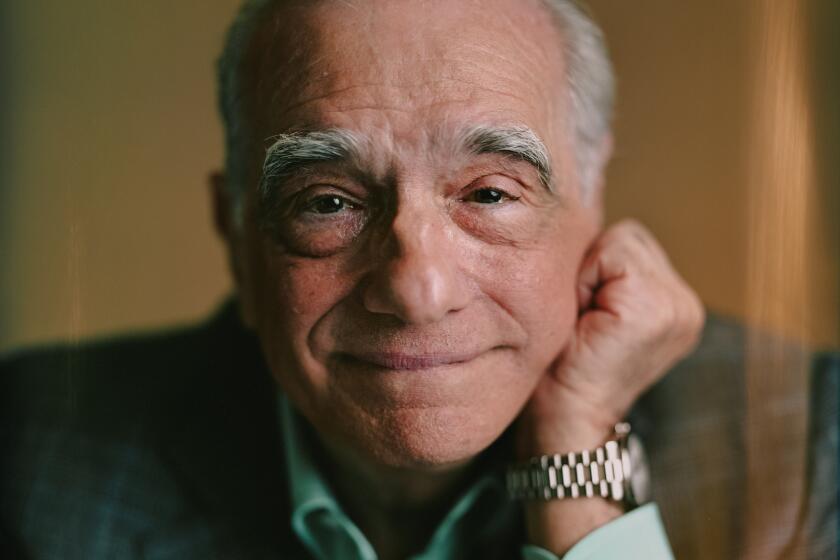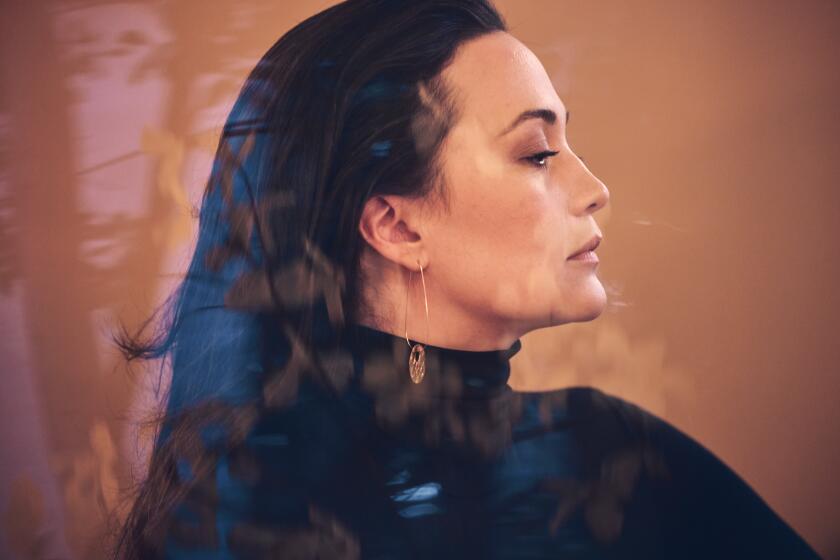A song emerges from a river of history and tradition for ‘Killers of the Flower Moon’
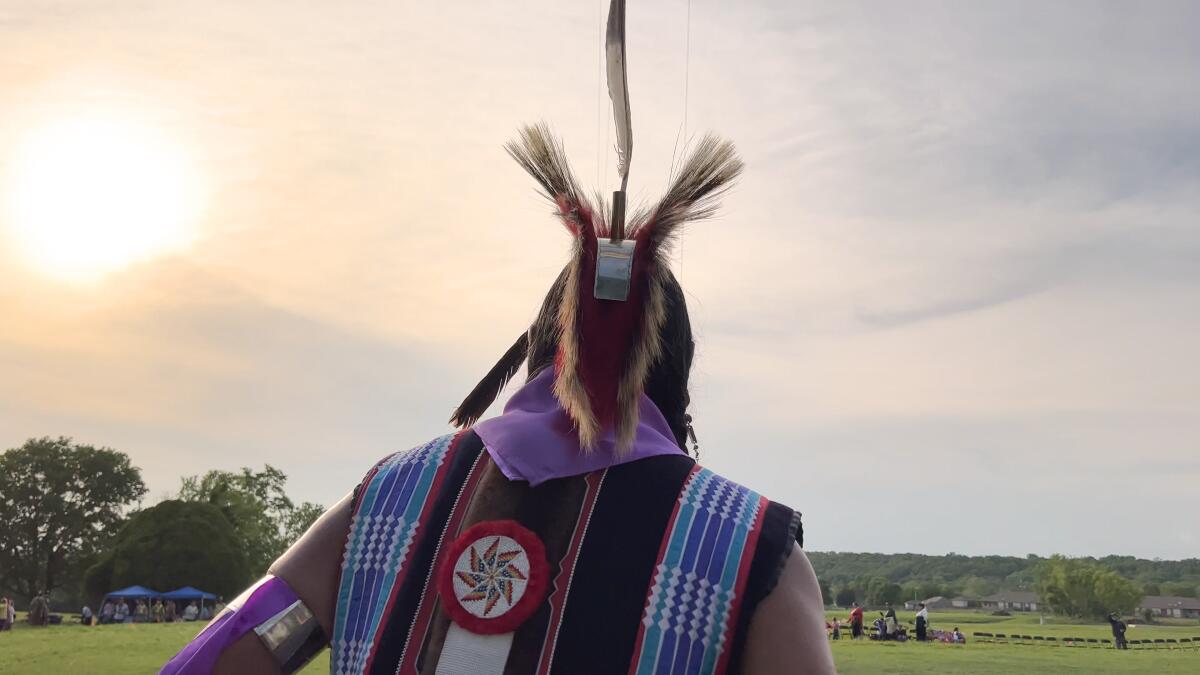
- Share via
“Stand up,” Scott George tells his people, the Osage, in the original song that concludes “Killers of the Flower Moon.” “God — Wakonda — made it this way for us,” he sings in the Osage language.
It’s a short, simple message — but a profound river of history and tradition flows underneath.
The deeper meaning, George says, “is that I want our people to stand up and recognize the fact that it’s God’s way — he got us here this far. And you can reference back to what all we’ve gone through, everything that happened to us as a people, and here we are ... we’re still here.”
The 81-year-old director talks about his decade in L.A., using film to find his better self and why his next movie will be about the teachings of Jesus.
Discussing his first Academy Award nomination, for the song “Wahzhazhe (A Song for My People),” George hops on a Zoom call from Shawnee, Okla., where he’s just been in meetings with a team from Oklahoma University about implementing geothermal energy in the affordable-housing program he directs for the Citizen Potawatomi Nation. In other words: Scott George isn’t your typical Hollywood songwriter.
He grew up in the town of Hominy in Osage County, not far from where Martin Scorsese shot most of “Flower Moon.” Based on David Grann’s 2017 novel, the film drew on Osage support and guidance to authenticate its horrific true story about the epidemic of murders that plagued their recent ancestors in Oklahoma in the 1920s.
George, who now lives in Oklahoma City, is also head singer of the Osage Veterans Soldier Dance group. He heard about Scorsese’s production and knew people who were trying out for parts — and he was a little wary. Specifically, he was apprehensive about the prospect of his group being asked to perform a ceremonial dance in the movie.
“We don’t allow them to be filmed,” he says, “and we frown on them being recorded. So that was an off-limits situation for us, and we kind of held back and didn’t volunteer ourselves for anything at the time.”
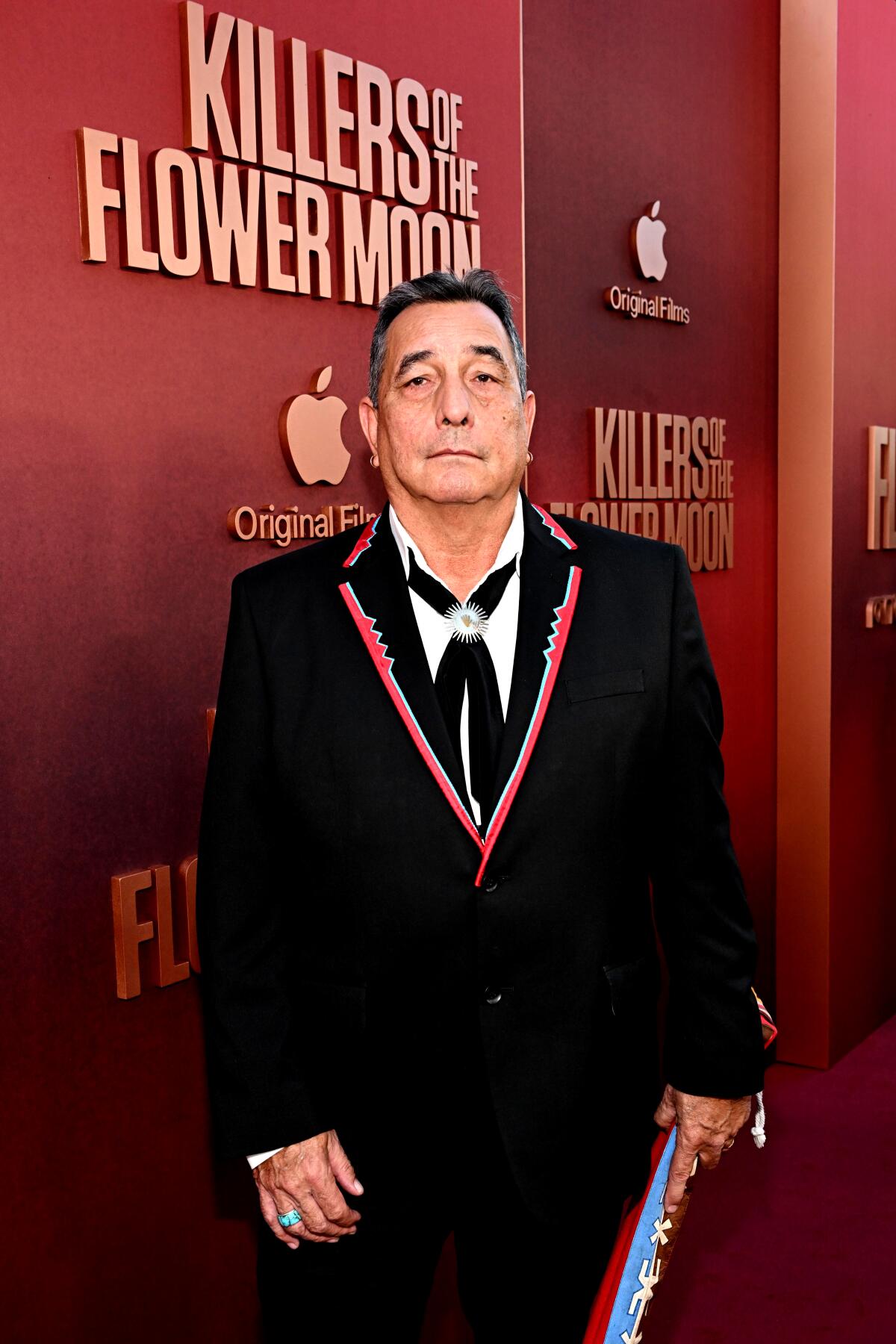
Then, Scorsese and the film’s stars — Lily Gladstone and Leonardo DiCaprio — started coming to the ceremonials, and George was struck by how attentive they were.
“Get ready,” he told a friend, “because they’re liable to say something to us or ask us to do something.”
Sure enough, he got a call from Vann Bighorse, director of the Osage language department for the Osage Nation, who had been advising Scorsese and the late Robbie Robertson, composer of the film’s score. Bighorse and his brother, Kenneth Bighorse Jr., have sung with George for years, and the three men met to discuss Scorsese’s request for them to perform a traditional dance for the final scene in the film.
George’s suspicions were confirmed “in the sense that they wanted what they saw in our ceremonial, they wanted the energy and all that stuff,” he says. “It took us a while to come to the conclusion that we just needed to make our own song.”
The main reason: respect. The group’s repertoire consists mostly of songs that date back 200 to 400 years and which invoke the names of living peoples’ actual relatives and ancestors. Also, most of the songs are in the Ponca language, a sister to Osage. “A lot of that music belongs to them,” George says.
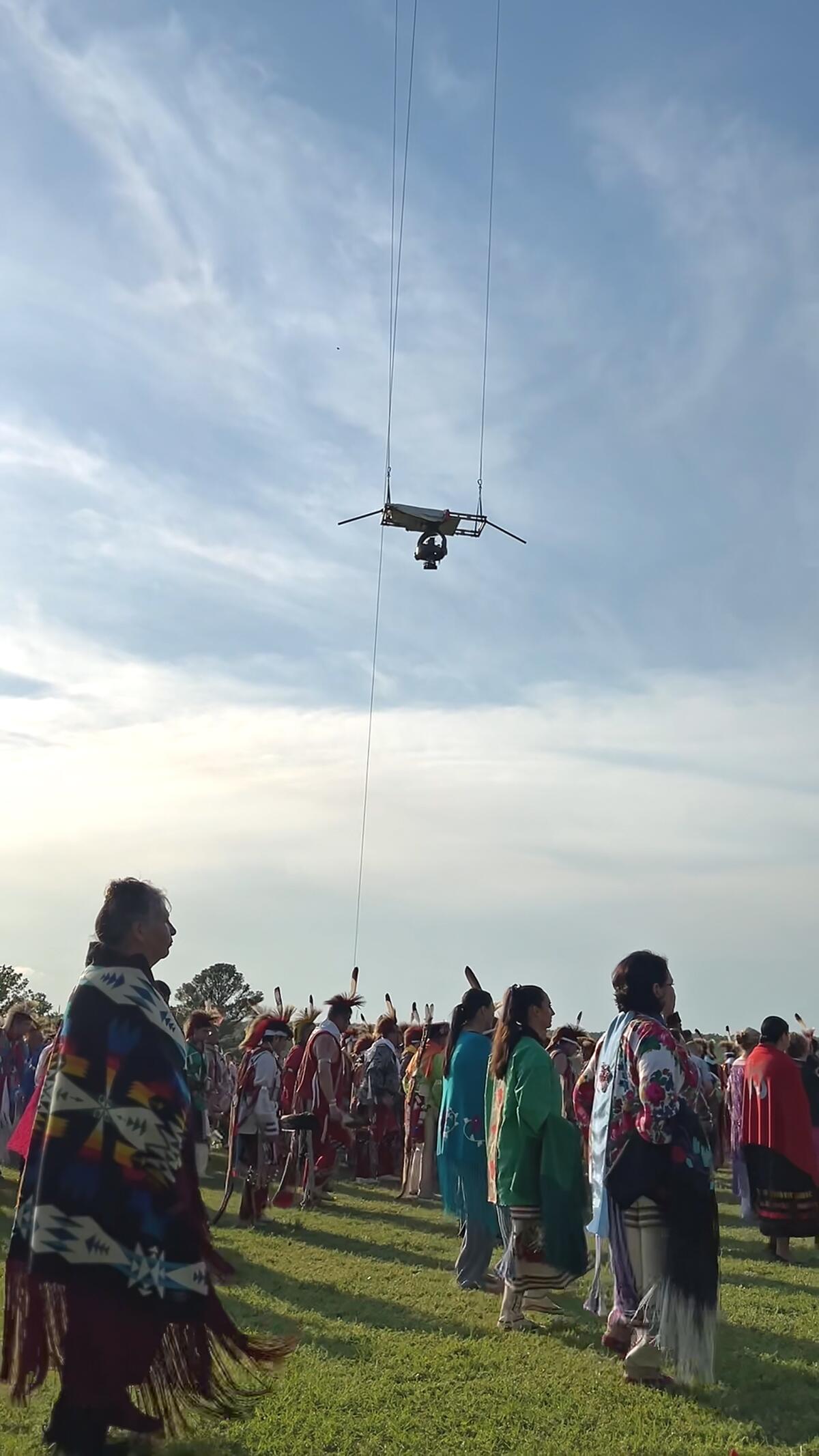
So he set about creating a new song for his people, for this story, and the result was “Wahzhazhe (A Song for My People).”
Rooted in the style and structure of a traditional song from the Southern Plains — a “throwback,” says George — “Wahzhazhe” was recorded in one day, outdoors, when Scorsese filmed it for his finale. George and his fellow singers and dancers were captured in a God’s-eye aerial shot, which starts on a giant drum made of buffalo hide and slowly rises to reveal a strikingly colorful pinwheel of ceremonial garments and movement.
George was invited to sit next to Scorsese on his high perch between takes and was able to see his group from an entirely new perspective — although it didn’t really sink in until he watched the scene in the wake of the entire movie.
Lily Gladstone is the first Native American to earn an Oscar nomination for lead actress. Now that she has kicked the door down, she plans on holding it open.
“The film itself takes you through a lot of emotions,” George says, “especially for us, as Osage people. But when we saw that, I think we understood what he was trying to achieve, to show that this is us now, this is who we are. And from my perspective, he did a good job doing that.”
The song’s message, passionately intoned by men and women in simple harmony, is literally directed at the Osage — but George hopes it will spark a curiosity and even affection for Native American music among the wider audience.
“It’s the most powerful thing we do,” he says. “It calls us together, and it defines who we are. And as far as I can tell, it’s been on this continent as long as we have.”
More to Read
From the Oscars to the Emmys.
Get the Envelope newsletter for exclusive awards season coverage, behind-the-scenes stories from the Envelope podcast and columnist Glenn Whipp’s must-read analysis.
You may occasionally receive promotional content from the Los Angeles Times.
